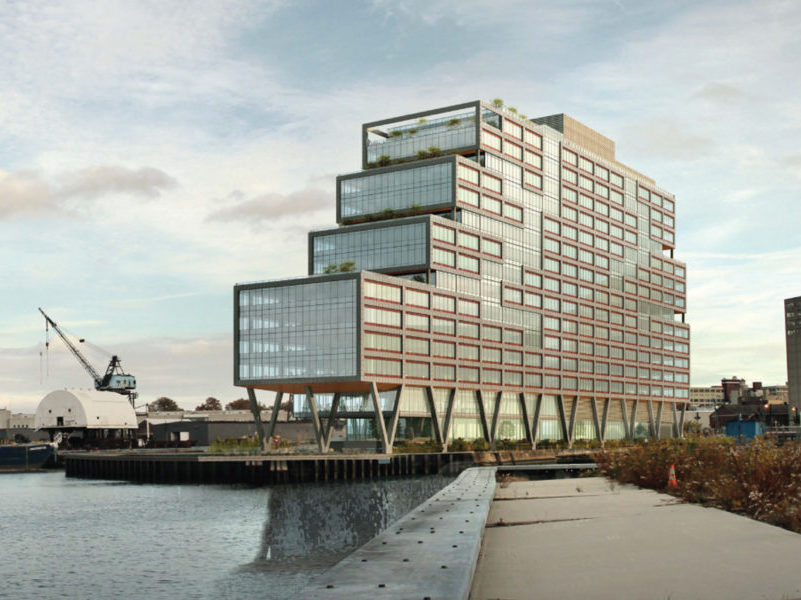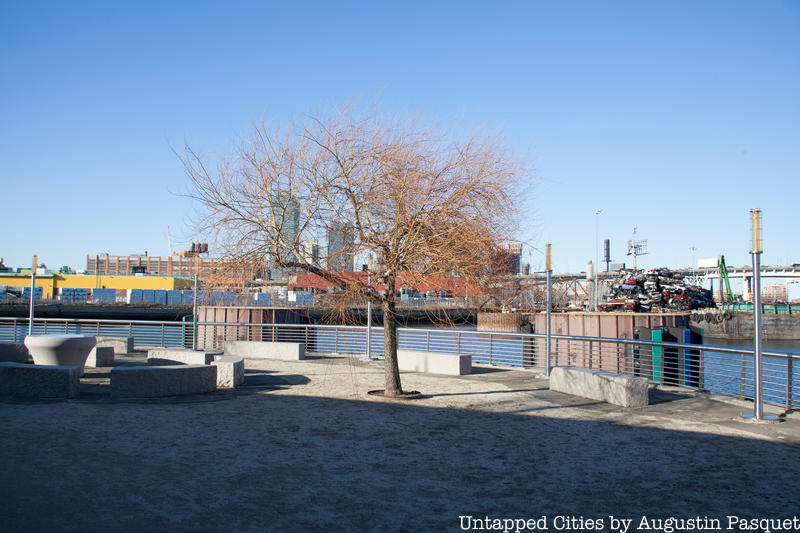 Dock 72 at Brooklyn Navy Yard
Dock 72 at Brooklyn Navy Yard
Following this year’s Presidential election, many American cities are evaluating their priorities for the next four years. One way that New York City promotes and showcases its design values regarding the built environment is through the Awards for Excellence in Design, now in its 34th year. This year’s 10 winners (plus two special recognitions) address many priorities heralded by Mayor Bill de Blasio, who announced that the selected projects “highlights New York City’s dedication to providing a wide range of design and public spaces that speak to the modern day New Yorker and meet the needs of a large, active and diverse city.”
Inclusivity is another key word, and Executive Director of the Public Design Commission, Justin Moore, told Untapped Cities that the projects also show how infrastructure can address “a number of goals and values for cities like improved sustainability for addressing climate change, or improved access to facilities and amenities for greater social equity. Our Excellence in Design Awards highlight projects that are directly taking these issues on–and we think are good models for our city and cities across the United States to look to when thinking about how public ‘infrastructure’ and design can lead to more positive outcomes.”
Without further ado, here are the 12 winners this year, with descriptions adapted from the press release.
1. Newtown Creek Waterfront Nature Walk

The Newtown Creek Wastewater Treatment Plant, with its notable digester eggs, is already a two-time winner of the Awards for Excellence in Design and now its Waterfront Nature Walk, designed by George Trakas, is also being recognized. Envisioned as a critical component of the awarded master plan for the Department of Environmental Protection’s plant, the Waterfront Nature Walk revives a long-inaccessible industrial shoreline along Newtown Creek for public use as a waterfront promenade and kayak launch.
The first phase of this environmental sculpture, completed in 2007, explores the rich history of the waterway from its use by the Lenape prior to the arrival of Europeans, to the bustling 18th-and 19th-century waterfront cooperage, ship making and lumber industries along its shores, to its current context abutting New York City’s largest, state-of-the-art wastewater treatment plant. These themes are drawn through dramatic site features, such as the 170-foot-long “Vessel” passage to the waterfront that evokes the angled timber construction of ships, and in details like trash receptacles designed to look like barrels, carefully selected plant material, and integrated graphics that have proven invaluable to DEP’s educational program at the plant.
The second and third phases of the Waterfront Nature Walk, currently under way, extend the promenade over Whale Creek to create a continuous walkway that connects to the street grid on either side of the plant. These phases also expand the artist’s conceptual focus from the local histories to ruminations on a broader history of ecology and human existence. The artist imbues public amenities such as bridged walkways, shade structures, benches, and drinking fountains with thought-provoking language, materials, and historical artifacts, notably the 385-million-year-old tree fossils unearthed at the Gilboa Dam in Schoharie County.
This project is by the Department of Cultural Affairs’ Percent for Art Program, the Department of Design and Construction and the Department of Environmental Protection, designed by George Trakas; Quennell Rothschild & Partners.





